Answered step by step
Verified Expert Solution
Question
1 Approved Answer
Materials: Small rock (small enough to fit in beaker; large enough to cause a visible displacement of water) 200 g hanging mass Styrofoam (cut
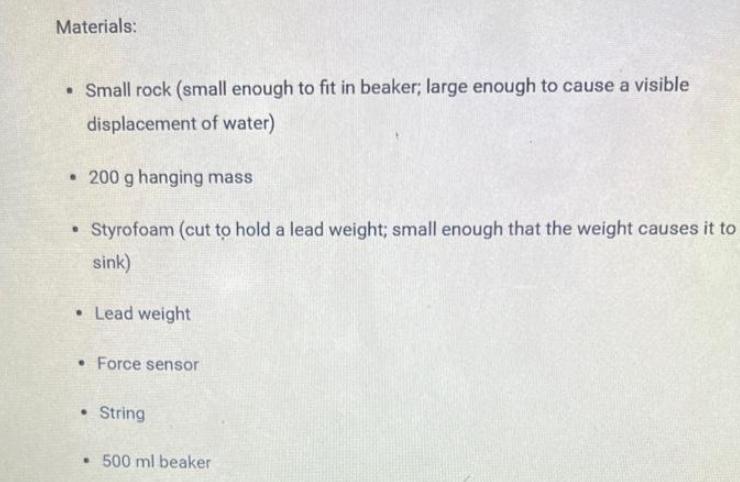
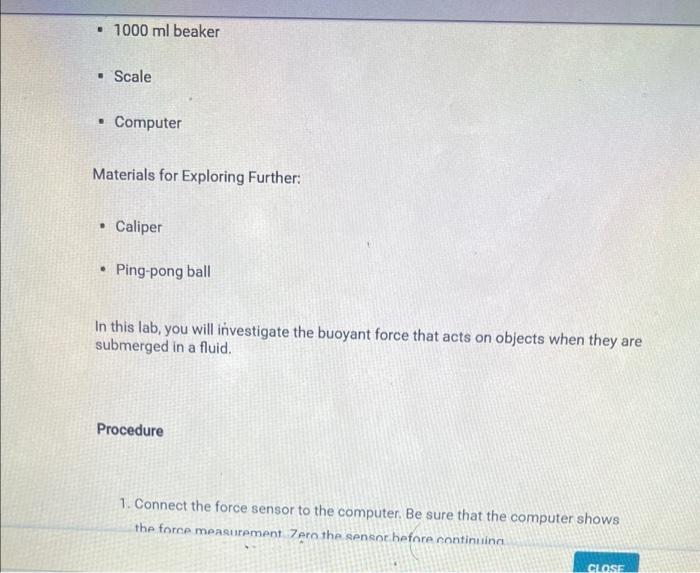
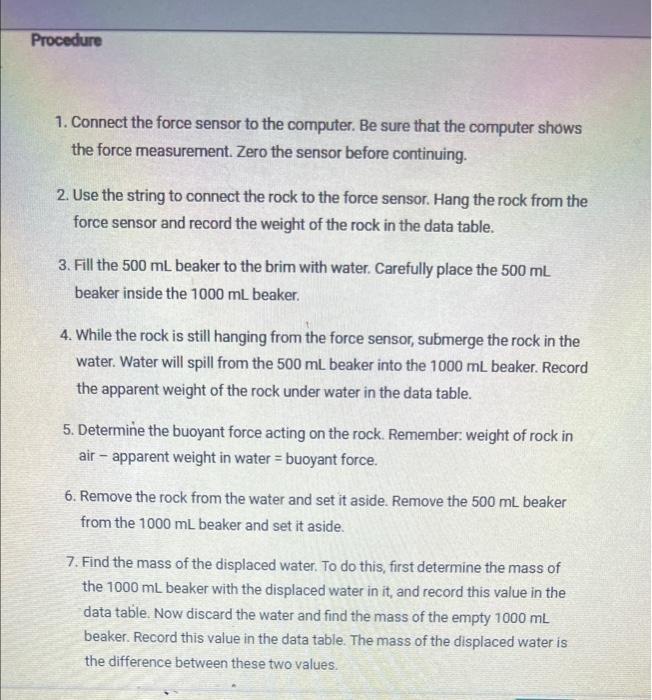
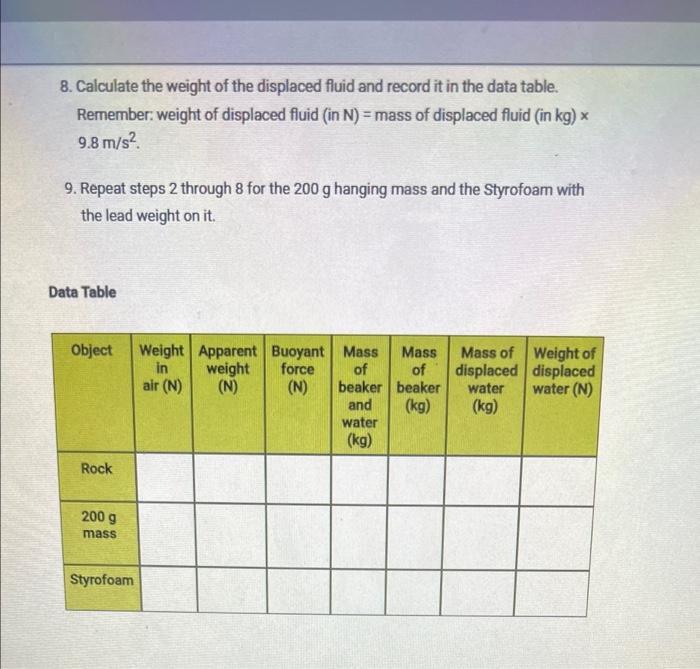
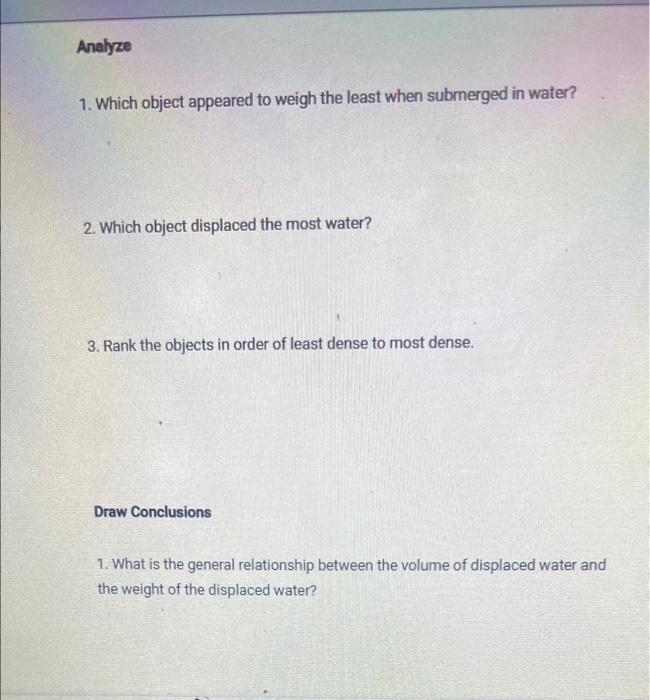
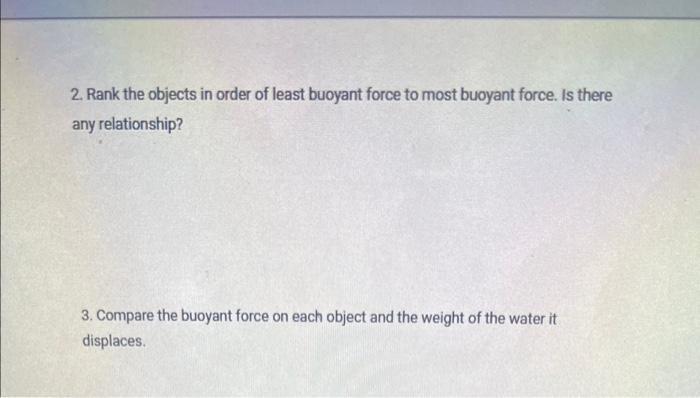
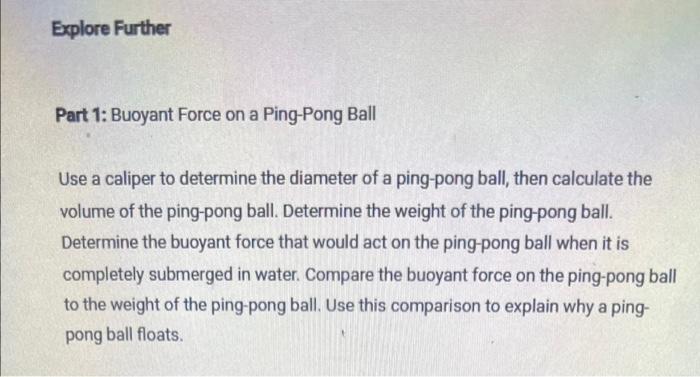
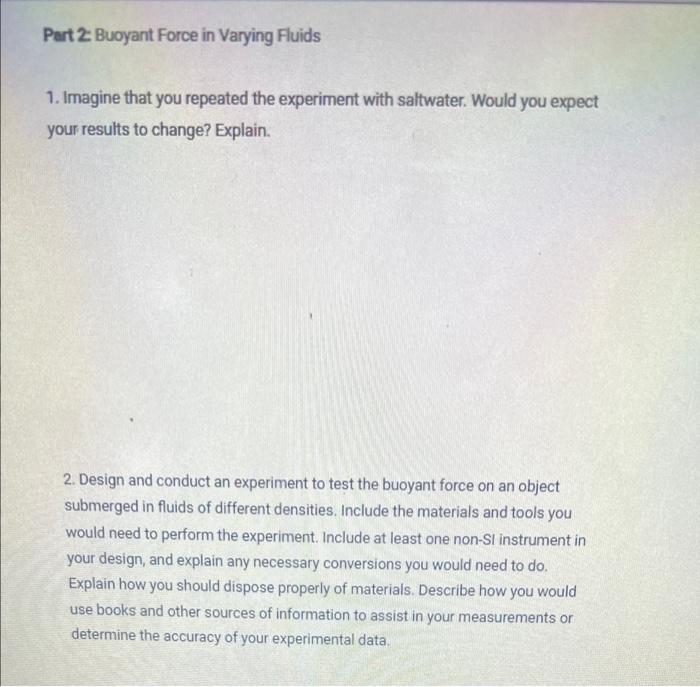
Materials: Small rock (small enough to fit in beaker; large enough to cause a visible displacement of water) 200 g hanging mass Styrofoam (cut to hold a lead weight; small enough that the weight causes it to sink) Lead weight .Force sensor String 500 ml beaker 1000 ml beaker Scale Computer Materials for Exploring Further: Caliper Ping-pong ball In this lab, you will investigate the buoyant force that acts on objects when they are submerged in a fluid. Procedure 1. Connect the force sensor to the computer. Be sure that the computer shows the force measurement Zero the sensor before continuing CLOSE Procedure 1. Connect the force sensor to the computer. Be sure that the computer shows the force measurement. Zero the sensor before continuing. 2. Use the string to connect the rock to the force sensor. Hang the rock from the force sensor and record the weight of the rock in the data table. 3. Fill the 500 mL beaker to the brim with water. Carefully place the 500 mL beaker inside the 1000 mL beaker. 4. While the rock is still hanging from the force sensor, submerge the rock in the water. Water will spill from the 500 mL beaker into the 1000 mL beaker. Record the apparent weight of the rock under water in the data table. 5. Determine the buoyant force acting on the rock. Remember: weight of rock in air apparent weight in water = buoyant force. 6. Remove the rock from the water and set it aside. Remove the 500 mL beaker from the 1000 mL beaker and set it aside. 7. Find the mass of the displaced water. To do this, first determine the mass of the 1000 mL beaker with the displaced water in it, and record this value in the data table. Now discard the water and find the mass of the empty 1000 mL beaker. Record this value in the data table. The mass of the displaced water is the difference between these two values. 8. Calculate the weight of the displaced fluid and record it in the data table. Remember: weight of displaced fluid (in N) = mass of displaced fluid (in kg) x 9.8 m/s 9. Repeat steps 2 through 8 for the 200 g hanging mass and the Styrofoam with the lead weight on it. Data Table Object Weight Apparent Buoyant Mass Mass Mass of Weight of in weight force air (N) (N) (N) of of beaker beaker displaced displaced water water (N) and (kg) water (kg) (kg) Rock 200 g mass Styrofoam Analyze 1. Which object appeared to weigh the least when submerged in water? 2. Which object displaced the most water? 3. Rank the objects in order of least dense to most dense. Draw Conclusions 1. What is the general relationship between the volume of displaced water and the weight of the displaced water? 2. Rank the objects in order of least buoyant force to most buoyant force. Is there any relationship? 3. Compare the buoyant force on each object and the weight of the water it displaces. Explore Further Part 1: Buoyant Force on a Ping-Pong Ball Use a caliper to determine the diameter of a ping-pong ball, then calculate the volume of the ping-pong ball. Determine the weight of the ping-pong ball. Determine the buoyant force that would act on the ping-pong ball when it is completely submerged in water. Compare the buoyant force on the ping-pong ball to the weight of the ping-pong ball. Use this comparison to explain why a ping- pong ball floats. Part 2: Buoyant Force in Varying Fluids 1. Imagine that you repeated the experiment with saltwater. Would you expect your results to change? Explain. 2. Design and conduct an experiment to test the buoyant force on an object submerged in fluids of different densities. Include the materials and tools you would need to perform the experiment. Include at least one non-SI instrument in your design, and explain any necessary conversions you would need to do. Explain how you should dispose properly of materials. Describe how you would use books and other sources of information to assist in your measurements or determine the accuracy of your experimental data.
Step by Step Solution
There are 3 Steps involved in it
Step: 1

Get Instant Access to Expert-Tailored Solutions
See step-by-step solutions with expert insights and AI powered tools for academic success
Step: 2

Step: 3

Ace Your Homework with AI
Get the answers you need in no time with our AI-driven, step-by-step assistance
Get Started


